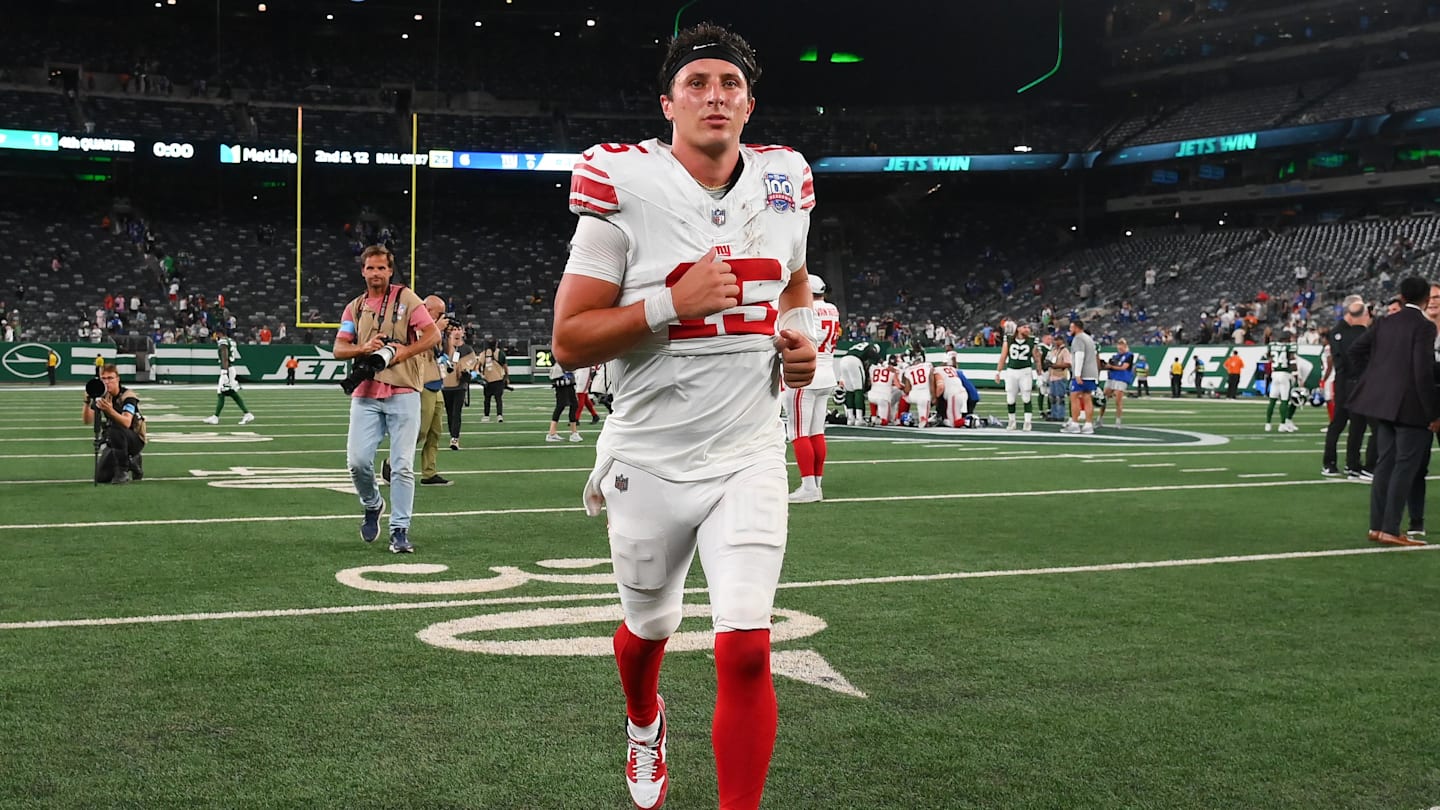Jobs
Ambitious plan to restore New York City’s industrial harbor could cut carbon emissions and create 50,000 jobs

New York City Economic Development Corporation CEO Andrew Kimball has big plans for the city’s workforce and its waterways. After decades of experience leading development in the public and private sectors, Kimball’s attention is turned to marshaling large-scale projects that will, ideally, create a cutting-edge labor force in New York City that reflects the five borough’s equity and sustainability goals.
For inspiration, he looked no further than the city’s harbors and rivers, historically the lifeblood of the city’s industrial prowess. Under his stewardship, EDC plans to use New York City’s proximity to the Atlantic Ocean to claw back some commerce from New Jersey via its “Blue Highway” and “Harbor of the Future” projects.
Kimball is delivering remarks at City & State’s Economic & Workforce Development Summit on Thursday, but he still found some time to chat with us about EDC’s current and future projects. This interview has been edited for length and clarity.
So what does the Economic Development Corporation do?
Well, first of all, we’re not a government agency. We are private, not-for-profit. The mayor has the majority of the board seats, so I am essentially appointed by the mayor. EDC is the city’s economic development engine.
Our revenues come from about 60 million square feet of space that we manage on behalf of the city. Some of that space is just land leases, and some we’re actively managing buildings. And that’s where our revenues generally come from, and that’s about 550 people. We have engineers, architects, real estate folks, government affairs folks and planners and we drive key sectors of the economy that are high-growth and high-wage. Examples of that are tech and life sciences or biotech and the green economy. More broadly, we also drive those sectors to the sites that we manage. So at the Brooklyn Army Terminal, where we have 3.5 million square feet of space, or the Hunts Point food distribution center that’s about three acres – those are critical assets in which we try to deploy some of the sectors.
We’re also charged with working with the mayor’s office and others on broad strategies to drive economic growth. When the mayor first came into office, he rolled out a job blueprint. This was in early 2022. It called for not just bringing back our economy, but building a stronger, more inclusive economy, really targeting these high-growth, high-wage sectors, but making sure that we’re as accessible to all New Yorkers, at every income level, from every background, and then help put together with the mayor and the governor the “New” New York plan, which was really a strategy for downtowns in a post-COVID environment.
Those two plans have been bearing real dividends. We’re at an all-time high for (private sector) jobs in New York City. We have the highest workforce participation rate in the city’s history. Right now, one in eight businesses in New York were created in the last 12 months. That’s a real tribute to the entrepreneurial nature of the city, something that EDC has been pushing for 30 years – business creation around innovation sectors. We’re also really proud of the fact that we’ve brought down black unemployment, in particular, 30% since COVID. We still have a lot of work to do there in making sure that the city is as equitable as everybody wants, but we’re really proud of the direction that we’ve taken.
What do you think is the most exciting avenue the city is taking to develop its workforce and economy?
One of the exciting things that we’re working on right now is a strategy that we’ll call the “Harbor of the Future.” Basically, at its core, it’s a recognition (first) that the waterfront has always been a key part of New York City’s economy, going back to the Lenape and then obviously Dutch settlers.
The workforce development around maritime was obviously a huge part of New York City’s manufacturing base for close to 100 years. That really went away as the port’s manufacturing left the city, and the port’s containers moved to New Jersey, Bayonne and Newark in the ’60s, ’70s and ’80s. As you may remember, New York City’s waterfront was really abandoned for a very long period of time. That started to change in the Bloomberg administration years, with a real focus on bringing green space and housing to the waterfront. There were a couple of projects, like the Brooklyn Navy Yard, that really started to show what could happen from an economic development point of view, a jobs point of view, on the waterfront.
The Harbor of the Future is a recognition that we have a unique moment right now to drive job creation from the north shore of Staten Island all the way up to Hunts Point in the Bronx, to connect these sites, both by the fast ferry service from EDC and also a network of moving up goods that we’re calling the “blue highway.” That would mean instead of trucks getting on the road from New Jersey to bring containers into the five boroughs that a much larger percentage would move by barge and get unloaded at a network of waterfront sites, most of which EDC controls around the city, for the last mile delivery by e-cargo bike or small electric truck. This is a big vision and involves an enormous number of projects, and we think that all those projects rolled up together can create approximately 53,000 temporary and permanent jobs and close to $100 billion in economic impact.
What are some of EDC’s biggest projects?
The biggest in size is what we’re going to be doing in the Brooklyn Marine Terminal. So
several months ago, the city announced that it had gained control of the 125 acres on the
Red Hook waterfront known as the Brooklyn Marine Terminal. This has been an underutilized asset for 40 years as large-scale container business went to New Jersey, and it had been controlled by the Port Authority of New York and New Jersey. They didn’t really see the need to invest in it because their primary purpose is the international containers that come into New Jersey. The city sees a real opportunity to make it one of the key hubs in a harbor-wide network for that movement of goods that I was just talking about. That’s just one of a number of big projects on the South Brooklyn waterfront.
A couple months ago, we broke ground on what is going to be the nation’s largest offshore wind port at the South Brooklyn Marine Terminal. We announced that we’re going to create a climate innovation hub at the Brooklyn Army Terminal, which is a 3.5 million square foot space in Sunset Park that EDC manages to focus on startup and the innovation of green economy businesses and also, workforce development programs around the green economy.
At the northern end of the city, we’re investing massively in the Hunts Point food distribution center by creating a new 750 million square foot cold storage food distribution hub for produce that’ll take 1,000 trucks off of fossil fuels, and the goal is one day moving goods by barge from New Jersey and from Brooklyn all the way up to Hunts Point for delivery to those warehouses.
There’s one other big one I’d like to highlight, which is in Kips Bay, where we’re taking a five acre site, which was the site of Hunter Nursing School. That was a decrepit facility on a full city block. The mayor and the governor came together and announced a really bold vision around life sciences jobs and business creation, but really, for workforce development in that high-wage, high-growth sector. (They) very quickly raised a billion dollars, split equally between the city and the state, to build three schools: a two-year school focused on public health careers, a four-year school and a graduate school all focused on public health careers and biotech careers, combined with a new STEM Department of Education high school that’s on one half of the campus. On the other half of the campus, we will be working with the private sector to build a million square feet of private sector biotech space. All of these things connected the schools to the businesses and the businesses to the schools to create internships, apprenticeships and entrepreneurship opportunities for those students. (It’s) a project that really speaks to driving one of our most important sectors and life sciences, but also to the mayor’s commitment to equity and diversity within that industry.










